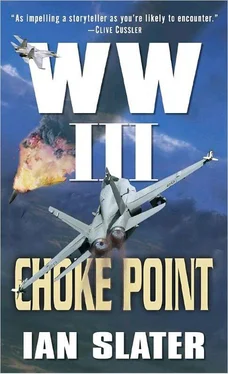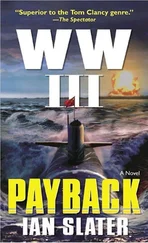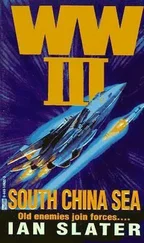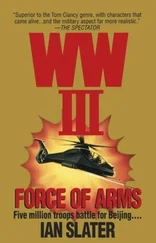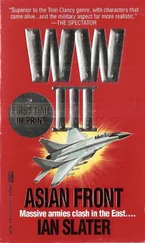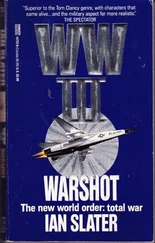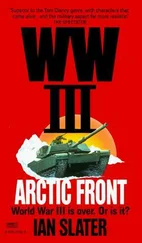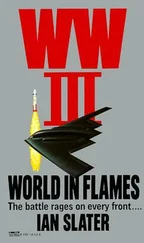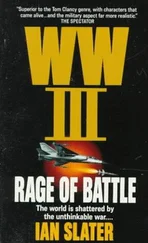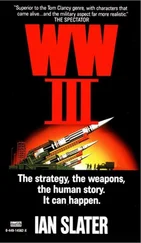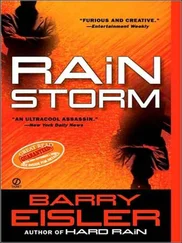Evans had given the appropriate “Right Stuff” smile.
“ ’Sides,” added the instructor, “once your tours are up, you’re gonna be one helluva lot more employable than an aviator. Fighter pilots aren’t in big demand among civilian airlines. You will be.”
Evans had nodded, remaining unassuaged. For Navy aviators, pilots, and RIOs, flying a civilian airliner was referred to disparagingly as “flying a bus.”
Back in the present, Evans thought that maybe Chipper was right. Perhaps the ROC pilot hadn’t moved and had the Falcon on full auto. He hoped so, because if the pilot was hurt too badly to eject, then the auto was his only hope, at least as long as his fuel lasted.
By now the blue screens in McCain ’s inner sanctums were showing first four, then eight … twelve … sixteen … twenty-four bogeys entering the McCain battle group’s no fly combat zone at a point fifty-six miles east of Oluanpi, Taiwan’s most southerly point. Neither Admiral Crowley nor his battle group staff had any idea why Taiwan’s air force would be there, when Taiwan’s ROC pilots were committed to protecting their island’s western approaches, particularly at Kinmen Island. If the bogeys turned out to be Taiwanese, they would be classified as friendlies and nothing to worry about, either for Chipper Armstrong’s CAP, 170 miles northwest of the carrier, or for the battle group itself. But then the McCain ’s SSES — the Ship’s Signal Exploitation Space, the innermost sanctum — reported detecting, via Satellite Infrared Data Uplink, an unmistakable Triple E — enemy electronic emission — pulsing from the twenty-four bogeys that were now directly south of Oluanpi.
Crowley knew this could mean only one thing — that the bogeys were now indisputably “hostiles,” ChiCom aircraft completing an end run down Taiwan’s east coast and around its southernmost point in order to sandwich the Taiwanese pilots who, low on gas, would be returning from the combat zone over Kinmen. Which meant the twenty-four ChiComs had refueled while in the air, a feat that, given the high advance winds of Typhoon Jane, was not only gutsy, but evidenced an in-flight fueling capability that neither the McCain ’s battle group nor Taiwan’s air force had thought the PLA air force was capable of. This, despite an intel report that some illiterate mushroom digger up in Shihmen had claimed he’d seen “glints” of what he thought might have been low-flying aircraft out to sea.
Admiral Crowley ordered his remaining eight Hornets aloft, to be followed by a fourteen-plane FITCOMPRON — Fighter Composite Squadron. This included twelve F-14 Tomcats and an EA-6B Prowler, already overhead, as was an E-2C Hawkeye, which could continue to act as an adjunct for McCain ’s ultrasecret signals exploitation space. The Prowler’s crew of four could jam enemy signals and in general cause electronic chaos among the twenty-four hostiles.
Crowley ordered Armstrong and his wingman Rhino Manowski to stay and shepherd the ROC Falcon, while the two other Hornets in the fluid four were to break off and head northeast to join the McCain ’s Hornets and Tomcats. The squadron’s mission was to get between the returning ROC fighters low on fuel and the ChiCom hostiles.
“Shit!” complained Eagle Evans, who, like Rhino Manowski and his RIO, had been left out of the FITCOMPRON. “I want to be in the fight.”
“What fight?” said Chipper Armstrong. “Rules of Engagement, Eagle. Remember? Our boys are supposed to get in between the two Chinas, to be peacemakers — airborne referees. Who wants that job? End up getting shot at by both sides if you’re not careful.”
“Well,” came in Manowski, “I’d rather some action than being a shepherd !” His RIO was of the same mind, and they both glared jealously as the other pair of the fluid four peeled off and went to afterburner, racing to rendezvous with McCain ’s composite fighter squadron. But the breakaway duo knew that with too much speed, they’d be too low on gas to make it back to the carrier if their loiter time between the returning ROC fighters and the ChiComs was longer than ten minutes. By which time the ROC guys from Kinmen would be heading back to refuel on Taiwan’s west coast at Ching Chuan Kang Air Force Base, seventy-five miles northeast of Taiwan’s Pescadores Islands, the latter approximately halfway between Taiwan and the Communist mainland.
For Chipper Armstrong and Evans, metallic-gray nimbostratus lay ahead, Chipper doing a visual check of his head’s-up display for heading, airspeed, and altitude. The advisory, caution, and warning lights bottom of the HUD screen would automatically flash and sound in the event of impending malfunction, but “ye olde visual,” as his top gun instructor at Fallon used to say, was always advisable. “Remember, son, you’re flying the beast! Beast ain’t flying you !”
Chipper’s main concern was the Super Hornet’s “short legs”—its gas-to-weight ratio — which necessitated operations officers wrestling daily with the critical “weapons-to-drop-tank” equation. The Hornet’s relative lack of internal fuel space, compared to other fighters, was referred to as IFO—“If only!” As a compromise, Armstrong and Manowski’s planes had been equipped with a clip-on underbelly fuel tank in addition to the two drop tanks, one on each wing’s outer stanchion, where they would normally have preferred to carry air-to-air Sidewinder missiles, or two laser-guided bombs.
On McCain , the operations officer, like everyone in the Combat Air Patrol, had no way of knowing how long this “Bizarro” friendly Falcon could stay airborne. If Crowley’d had his way, he would have ordered Chipper and Rhino to join the twenty-two-plane posse now vectored to intercept the twenty-four ChiCom hostiles forty miles west of the Penghu Island group, off southwest Taiwan, before the ChiCom planes had a chance to down the near empty ROC Falcons, which were also defenseless, having expended all their ordnance over Kinmen. Crowley’s other option — his wish, in fact — was to recall Armstrong and Manowski. This was stymied, however, by a political necessity — the President could not be seen deserting a staunch ally in need, even if it was just one pilot. Any reluctance to stay with Bizarro would, as John Cuso advised, be a propaganda coup for America’s enemies, who were already gleeful with the stunning victories of what Arab television, radio, and press were now calling the “mighty midget” sub that, with the massive conflagration at Washington State’s Cherry Point refinery and the forced evacuations of thousands of Americans, was continuing to humble the Great Satan.
“There he goes!” said Evans, his voice so loud it startled Armstrong in the front seat.
“Jesus, Eagle—”
“No doubt about it. Right hand is definitely moving — sliding along the canopy seal — for support, I guess. Hand must be shot up pretty bad — trying to edge it forward along the seal so he can let it drop down onto the stick.” The eagle-eyed Evans, though not having realized his dream of being a fighter pilot, was recalling that the Falcon’s control stick, unlike in most fighters, wasn’t on the center line, but was instead located on the right console.
Now Chipper could see it too, though it was difficult to spot, given the F-16D’s near opaque shining gold bubble. Evans was correct, and their Hornet’s wingman confirmed his observation. “Eyes of an eagle, ol’ buddy,” Rhino complimented him. “Eyes of an eagle.”
“Yeah,” responded Evans, “but not the eyes of an owl.” No one but Armstrong picked up Evans’s oblique allusion to his aviator nighttime vision test.
Читать дальше
